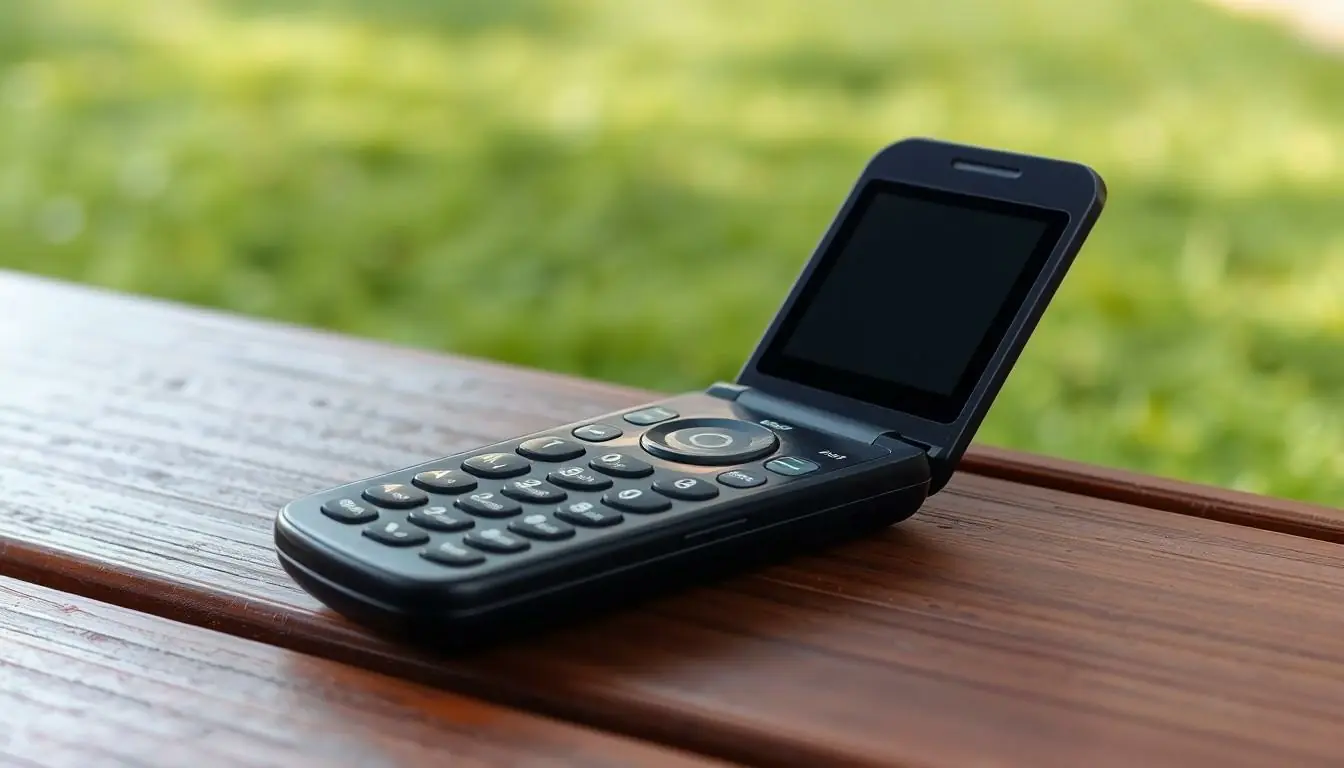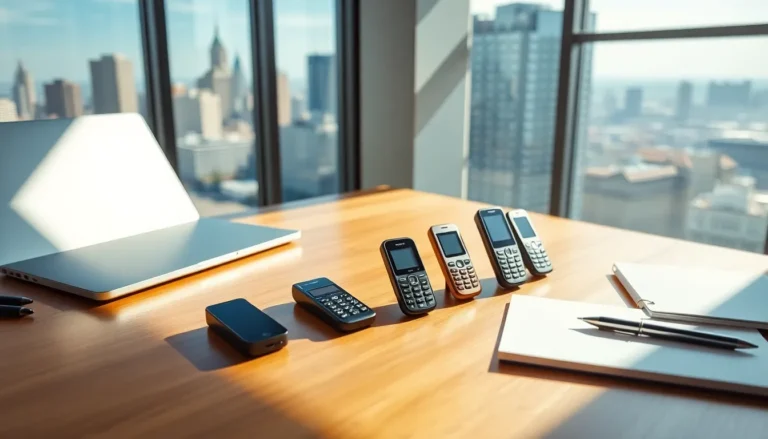In a world where smartphones reign supreme, there’s a cheeky little secret lurking in the shadows: trap phones. These unassuming devices are the ultimate sidekicks for those looking to keep their lives under wraps—or perhaps just avoid the dreaded “Can I have your number?” scenario. Imagine a phone that’s not just a communication tool but a master of disguise, ready to help you dodge unwanted attention like a ninja in a crowded café.
But what exactly is a trap phone? It’s more than just a burner; it’s the stealthy gadget that keeps your real life private while letting you play the role of a tech-savvy spy. Whether it’s for a clandestine rendezvous or simply to avoid your ex’s texts, trap phones are the unsung heroes of modern-day escapades. Buckle up as we dive into the quirky world of trap phones and discover why they might just be the perfect addition to your tech arsenal.
Table of Contents
ToggleOverview of Trap Phones
Trap phones operate as discreet devices, providing a layer of privacy in an era filled with smartphones. Users often rely on these gadgets for various reasons, such as avoiding unwanted interactions and maintaining anonymity. Traditional burner phones differ significantly from trap phones, which prioritize subtlety and functionality.
In scenarios where individuals need to dodge unwanted messages, trap phones prove invaluable. These devices allow for effective communication without revealing personal details or identity. Many individuals utilize trap phones during sensitive situations, ensuring that their private lives remain protected.
Features of trap phones cater to user needs, offering a simple interface while retaining essential capabilities. Many models include encrypted messaging apps, limiting access to unauthorized users. The ability to manage multiple apps discreetly enhances the overall user experience.
Trap phones serve diverse purposes beyond just privacy. They assist in creating boundaries in social interactions, enabling users to separate their personal and public lives. Some people find comfort in having distinct devices for different aspects of their lives, reducing clutter and risking oversharing.
Caution remains crucial when selecting a trap phone. Users should choose models with solid security features and minimal tracking capabilities. Researching various options can yield devices that align closely with user privacy requirements.
Trap phones fit seamlessly into modern lifestyles, allowing users to navigate their environments with confidence. With the right approach, these devices can be essential tools for maintaining control over personal interactions and ensuring peace of mind.
Features of Trap Phones

Trap phones offer key features that enhance privacy in everyday interactions. These devices cater specifically to users who value discretion and security.
Discreet Design
Trap phones often sport a compact and unassuming design. They typically lack flashy logos and advanced features that attract attention. Many models resemble basic flip phones, making them blend seamlessly into any environment. Their inconspicuous appearance reduces the likelihood of unwanted inquiries. Users benefit from models that offer a low-profile option, delivering both functionality and subtlety.
Basic Functionality
Basic functionality defines trap phones, prioritizing essential communication features. These devices generally include calling and text messaging capabilities without the distractions of advanced technology. Users find comfort in simplified interfaces that are easy to navigate. Many trap phones come pre-installed with secure messaging apps, ensuring encrypted conversations. Calls and texts remain private, reinforcing anonymity. Users often appreciate devices with minimal internet access, limiting exposure to tracking and surveillance. Such features make trap phones effective tools for maintaining privacy in a connected world.
Benefits of Using Trap Phones
Trap phones offer various advantages, particularly in maintaining privacy and affordability. These discreet devices play a vital role in protecting user identity while ensuring essential communication.
Privacy Protection
Privacy protection represents a primary benefit of trap phones. By utilizing these devices, individuals can engage in conversations without the worry of unwanted surveillance. Trap phones often come equipped with secure messaging apps that use encryption to safeguard discussions. Users enjoy the ability to separate personal information from everyday communications, minimizing the risk of data breaches. Enhanced privacy encourages individuals to express themselves freely, knowing their conversations remain confidential. With limited internet access, these phones further reduce exposure to tracking by third parties.
Low Cost Options
Low cost options make trap phones accessible to a wide audience. Many of these devices are available at affordable prices, appealing to budget-conscious consumers. Basic models provide essential communication features without the extra costs associated with expensive smartphones. Users looking for cost-effective solutions find value in trap phones, which often feature no monthly contracts, allowing greater flexibility. With prepaid plans and limited features, these phones help minimize ongoing expenses. Multiple manufacturers offer a range of models at various price points, ensuring everyone can find an option that fits their needs.
Common Uses of Trap Phones
Trap phones serve multiple purposes, primarily focusing on privacy and security in communication. These devices cater to various users seeking discretion in their interactions.
Temporary Communication
She uses trap phones for temporary communication in specific scenarios. Personal exchanges often require a level of separation from permanent contacts. Individuals may opt for a trap phone to interact with new acquaintances without revealing their primary number. Such situations include online dating or classified ads where anonymity proves valuable. People can engage in conversations for a limited time without being tied to long-term relationships. This versatility allows users to keep their private lives intact while still maintaining essential communication.
Avoiding Surveillance
Trap phones significantly reduce the risk of surveillance in daily activities. They permit individuals to communicate away from prying eyes interested in tracking conversations. These devices often include features that obscure user identity and employ encrypted messaging apps, ensuring confidentiality. Some people rely on trap phones while discussing sensitive topics or engaging in potentially compromising situations. Maintaining privacy becomes easier since most models limit connectivity to only necessary applications, reducing exposure to online tracking. Enhanced anonymity empowers users, letting them approach interactions with confidence.
Potential Risks and Drawbacks
Trap phones do come with several risks and drawbacks. Users may find limited functionality compared to standard smartphones, as many trap phones prioritize basic calling and texting features. This could hinder access to apps and services vital for some individuals. With basic models, a lack of advanced features leads to less user-friendliness in navigating modern communication methods.
Privacy is often a concern with trap phones. Although designed to maintain anonymity, improper use or misconfiguration can expose users to tracking and surveillance. Users might inadvertently reveal personal information through unsecured channels or missed security settings.
The risk of losing a trap phone poses additional challenges. Losing a discreet device can lead to potential data breaches or unwanted attention if someone finds the phone and accesses stored information. Users must actively safeguard their devices to minimize such risks.
While affordability is a significant benefit, low-cost models might compromise quality. Users could encounter devices with subpar security features that fail to protect personal data adequately. Choosing a trap phone with inadequate security risks undermining its primary purpose—to protect privacy.
Users should also consider the social implications of using a trap phone. Some might perceive it as suspicious or secretive, leading to misunderstandings in personal or professional interactions. The perception of using a trap phone may foster distrust among acquaintances, complicating social dynamics.
Lastly, limited customer support for certain trap phone brands can create issues. Users might struggle to find assistance if they encounter technical problems, resulting in frustration and reliance on self-help methods. Navigating these potential risks and drawbacks requires careful consideration for individuals seeking to maintain their privacy.
Trap phones offer an innovative solution for those seeking privacy and control in their communications. With their discreet design and essential features, these devices empower users to navigate social interactions without revealing personal information. They provide a valuable layer of protection against unwanted surveillance and help maintain boundaries in both personal and public lives.
While trap phones come with certain limitations, their affordability and enhanced privacy make them an appealing choice for many. By choosing the right model with strong security features, individuals can enjoy the benefits of anonymity and confidence in their communications. Ultimately, trap phones represent a practical tool for anyone looking to safeguard their privacy in an increasingly connected world.



